The Real-World Architecture of Luke Skywalker’s Jedi Hideaway
The huts of Ahch-To exist here on Earth.
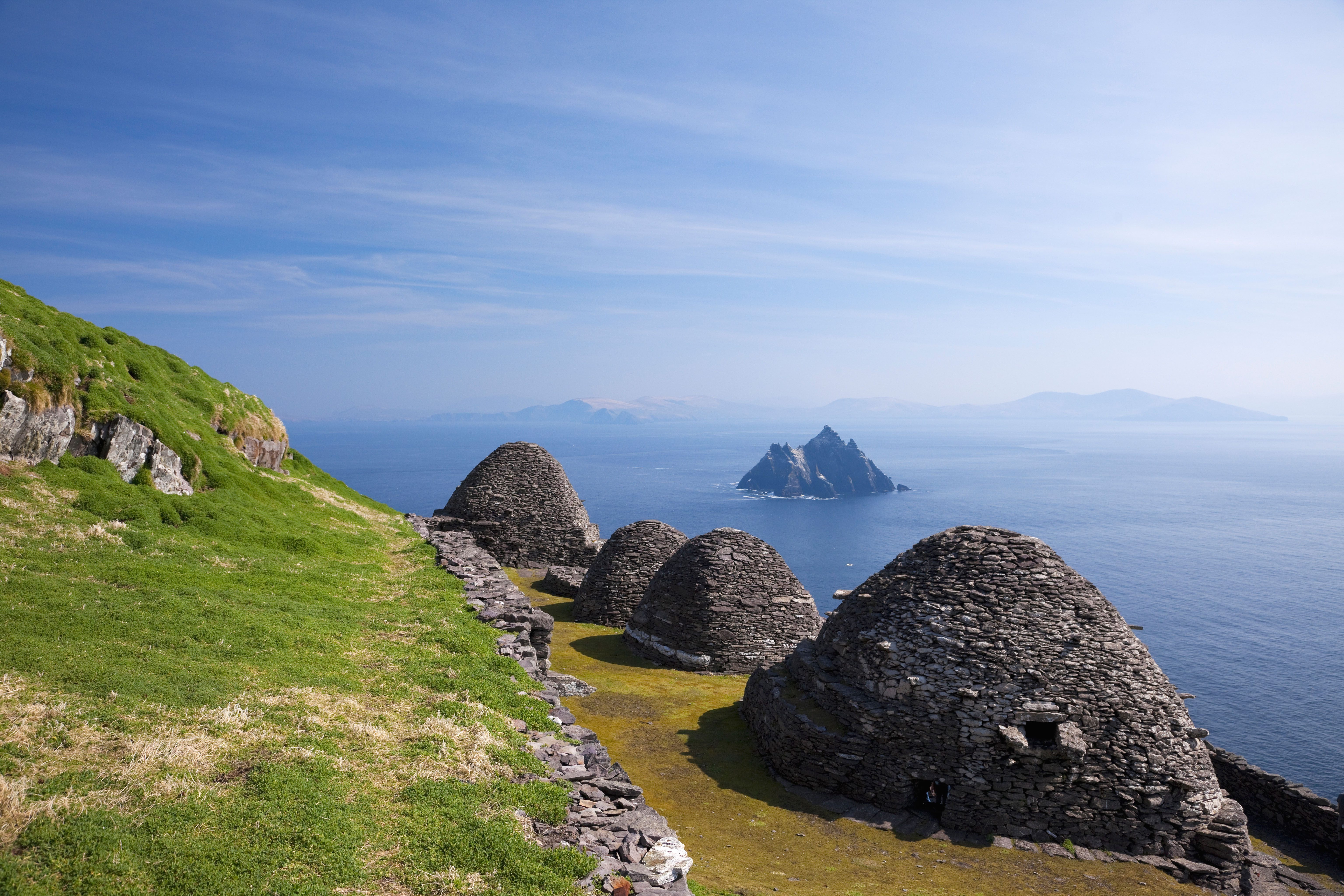
The Star Wars series has famously used exotic real-world filming locations as stand-ins for its alien planets. Scenes depicting Luke Skywalker’s home planet of Tatooine were filmed in Tunisia (in the region actually called Tataouine), the Battle of Hoth took place on Norway’s glaciers, and Endor’s forest moon was portrayed by the redwood groves of Northern California. In The Last Jedi, Luke Skywalker’s hermitage on Ahch-To was filmed mostly on the island of Skellig Michael, west of the Iveragh Peninsula in County Kerry, Ireland. In this case, the producers didn’t just use the island’s striking natural beauty, but also adapted the otherworldly structures built by its former inhabitants.
The ancient Jedi shelter where Luke Skywalker resides is a very terrestrial building type called a clochán, a primitive stone dwelling that can still be found on Skellig Michael. These structures, also called beehive huts, were built by the ascetic Christian monks who first settled the island in the 6th or 7th century. Although beehive huts can be found across Europe and particularly western Ireland, the examples on Skellig Michael are probably the most striking and isolated in the world.
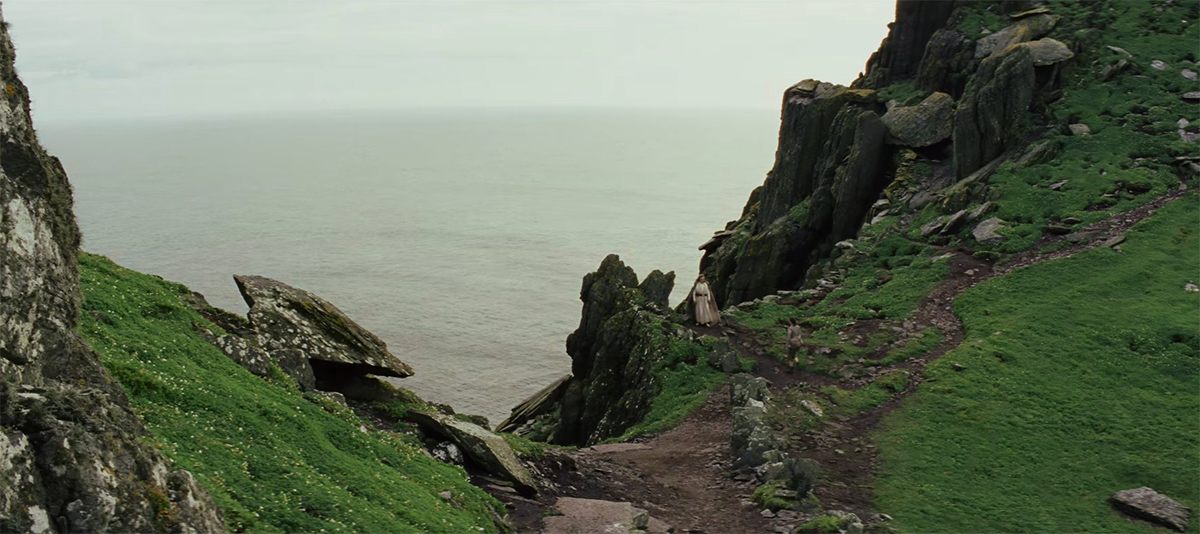
A beehive hut is characterized by its circular or square footprint, dry stone walls, and corbeled vault roof. In areas lacking timber large enough for construction, early builders employed whatever stone was readily available. The walls of beehive huts are typically of unmortared masonry, most likely due to the absence of lime for making mortar and the expertise required to use it. The stones are cut flat, rough and uneven on the outside face, but smoother on the inside.

The roof of a clochán does not constitute a true dome, but instead forms a corbeled vault: Each course of masonry is laid slightly inboard of the course below it, such that progressive layers form smaller and smaller circles until the roof is closed. This type of construction could be performed without the need for wooden centering or formwork, but the resultant structural forces meant that the hut walls were between 1 and 2 meters thick. Some clocháns have an oculus at the top for ventilation, though the ones on Skellig Michael do not. The entrance to a clochán is generally a single rectangular opening underneath a thick, horizontal stone beam.
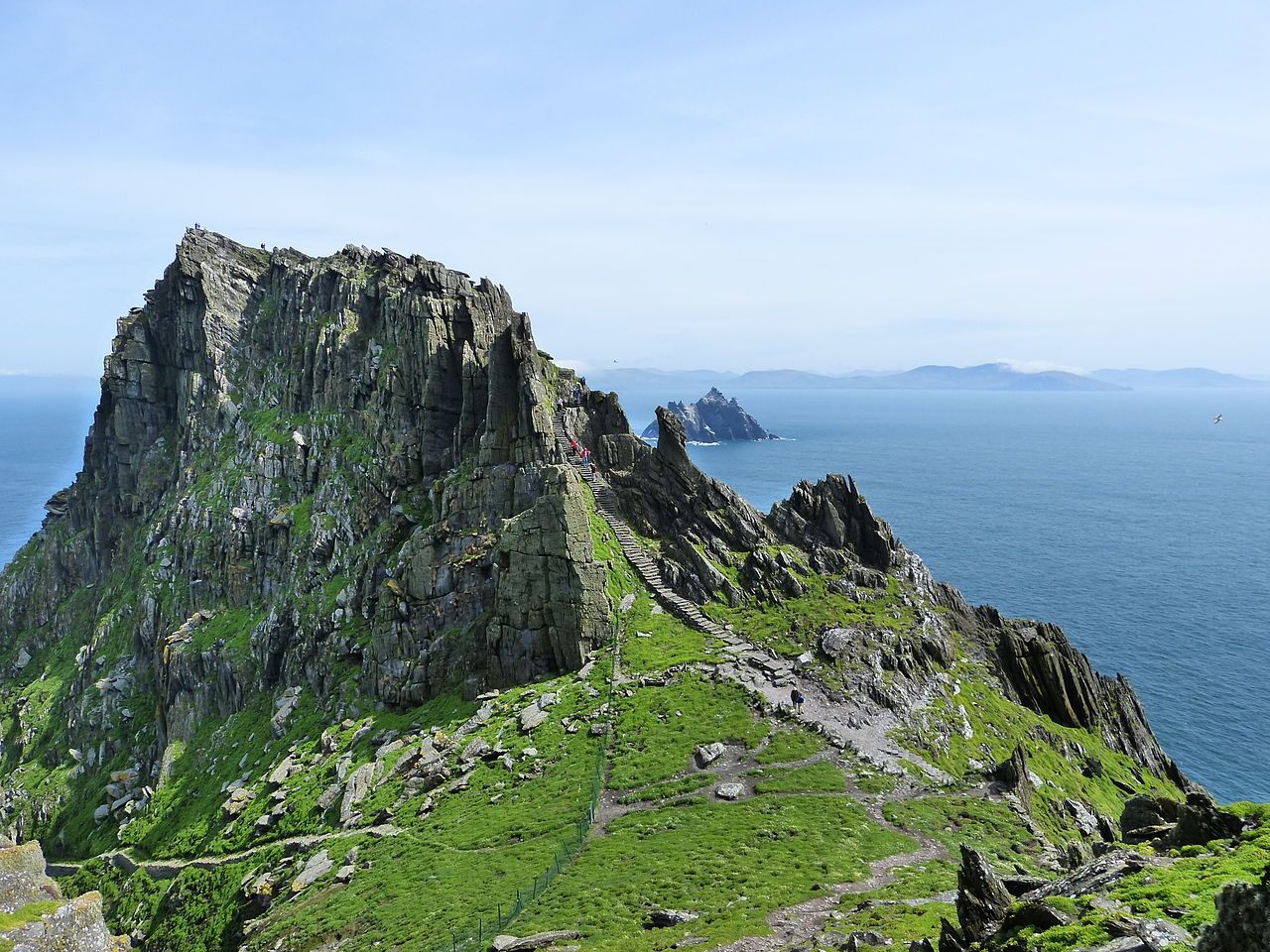
Skellig Michael and its clocháns were continuously inhabited from the founding of the monastery until about 1200, after which the monks left the island due to worsening climatic conditions. They abandoned their huts, as well as two oratories and a lime-mortared stone church, and relocated to Ballinskelligs on the Iveragh Peninsula. The monastic order continued to visit and maintain Skellig Michael, which was later named a UNESCO World Heritage Site due to its perfectly preserved illustration of Ireland’s early Christian monastic life.

While the development of porgs was an unintended consequence of filming in a location with protected puffins, the choice to use Skellig Michael’s beehive huts was a more deliberate one: For the filming of The Last Jedi, the production team built their own cluster of clocháns at Ceann Sibéal on nearby Dingle Peninsula. Their film set stayed true to the architectural form of the Skellig Michael clocháns, although the Jedi shelters are shown to be more numerous and to have open oculi. Also, it’s doubtful that 6th-century builders had the advantage of erecting their stone huts with a 100-foot tower crane.
The primitive construction style, alien appearance, and monastic usage of the Skellig Michael clocháns makes them ideal stand-ins for the Jedi dwellings at the temple on Ahch-To. Even a science fantasy series famous for floating cloud cities and moon-sized space stations can draw inspiration from an underappreciated corner of our own very terrestrial architectural heritage.




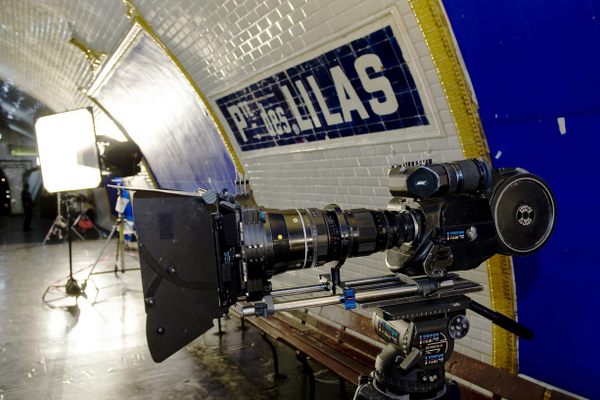
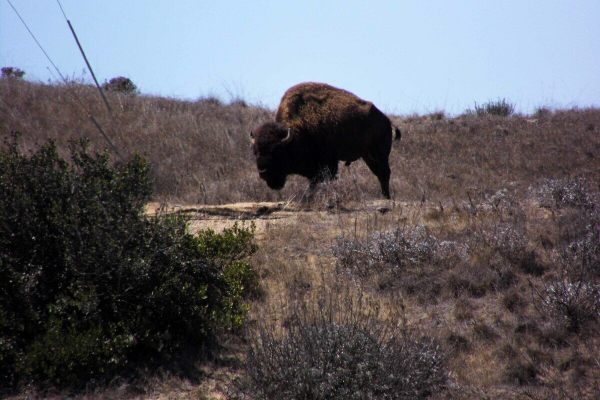












Follow us on Twitter to get the latest on the world's hidden wonders.
Like us on Facebook to get the latest on the world's hidden wonders.
Follow us on Twitter Like us on Facebook